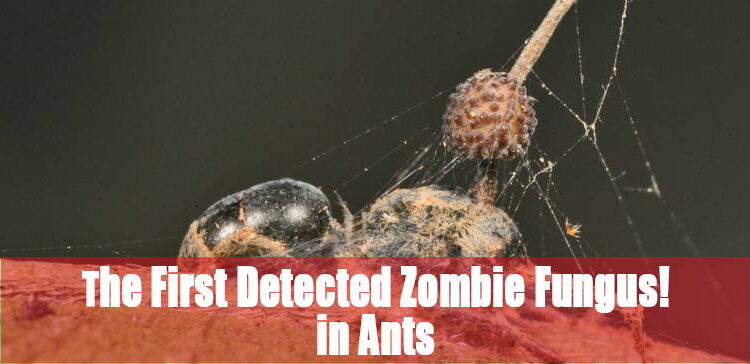After the “zombie ant fungus” kills a victim, it grows a stalk called the stroma, which protrudes from the ant cadaver.
A large round structure, the ascoma, forms on the stroma. Infectious spores then develop in the ascoma and are released onto the forest floor below, where they can infect foraging ants from the colony.
“After climbing vegetation and biting the veins or margins on the underside of leaves, infected ants die, remaining attached to the leaf postmortem, where they serve as a platform for fungal growth,” says lead author Raquel Loreto.
Previous research shows that the fungus, Ophiocordyceps camponoti-rufipedis, controls the behavior of carpenter ant workers—this is why it is called “zombie” – to die with precision, says Loreto, a doctoral candidate in entomology, Penn State’s College of Agricultural Sciences.
The fungus grows a stalk, called the stroma, which protrudes from the ant cadaver. A large round structure, known as the ascoma, forms on the stroma. Infectious spores then develop in the ascoma and are discharged onto the forest floor below, where they can infect foraging ants from the colony.
This fungal reproductive activity must take place outside the ant colony, in part because of the ants’ social immunity, which is collective action taken to limit disease spread, explained study co-author David Hughes, assistant professor of entomology and biology, Penn State.
“Previous laboratory studies have shown that social immunity is an important feature of insect societies, especially for ants,” Hughes said. “For the first time, we found evidence of social immunity in ant societies under field conditions.”
 “Ants are remarkably adept at cleaning the interior of the nest to prevent diseases,” Hughes said. “But we also found that this fungal parasite can’t grow to the stage suitable for transmission inside the nest whether ants are present or not. This may be because the physical space and microclimate inside the nest don’t allow the fungus to complete its development.”
“Ants are remarkably adept at cleaning the interior of the nest to prevent diseases,” Hughes said. “But we also found that this fungal parasite can’t grow to the stage suitable for transmission inside the nest whether ants are present or not. This may be because the physical space and microclimate inside the nest don’t allow the fungus to complete its development.”
“We limited our survey to the immediate area surrounding the nest because this is the zone the ants must walk through to leave and return to the colony,” Loreto said. “To better understand the path worker ants took, we measured and mapped in 3-D the trails formed by the ants, and that allowed us to determine spatial location of potential new hosts, which would be on the foraging trails.”
By measuring the position of manipulated ants and plotting these locations with respect to the nest, the researchers established that infected ants die on the “doorstep” of the colony.
“What the zombie fungi essentially do is create a sniper’s alley through which their future hosts must pass,” Hughes said. “The parasite doesn’t need to evolve mechanisms to overcome the effective social immunity that occurs inside the nest. At the same time, it ensures a constant supply of susceptible hosts.”
Could this fungus spread to humans? If genetically modified and used as a war weapon, can you imagine the destruction this disease can cause?
Sources: Penn State
Photo Credits: David Huges
You may also like:
 Rechargeable Emergency Items To Always Have In The House
Rechargeable Emergency Items To Always Have In The House
Three Powerful Remedies To Keep On Hand In A Crisis (Video)
9 Hiding Spots In Your House Where Looters Always Look First















I’ve seen this on tv along time ago. yes this would be a very bad weapon.